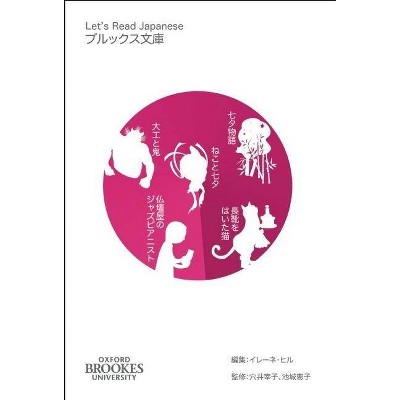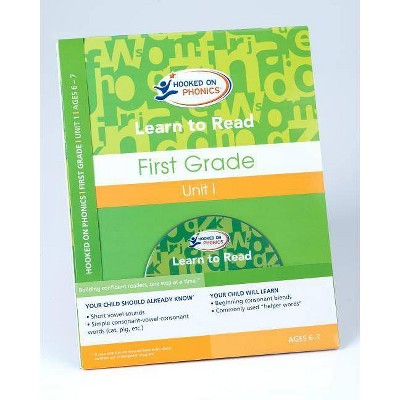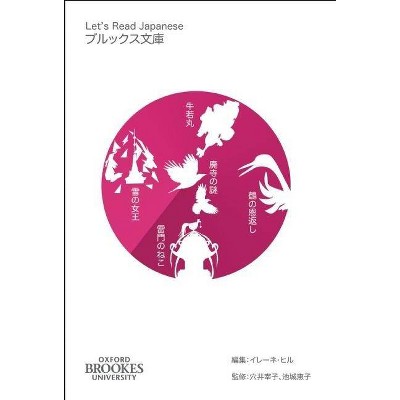Learn to Read in Japanese, Volume II - by Roger Lake & Noriko Ura (Paperback)

Similar Products
Products of same category from the store
AllProduct info
<p/><br></br><p><b> About the Book </b></p></br></br>The second volume in the "Learn to Read in Japanese" series, this book teaches 600 additional kanji, for a total of 1208. It is based on our belief that the most enjoyable and efficient way to learn to read in Japanese is to learn kanji rapidly with the help of memory aides and then to start reading almost immediately.<p/><br></br><p><b> Book Synopsis </b></p></br></br><p>This book is based on our belief that<strong> </strong>the <strong>most enjoyable and efficient way to learn to read in Japanese</strong> is to dive in and <strong>start reading almost immediately</strong>, learning new kanji with the help of memory aides as you go.</p><p>In order to make this approach workable, we introduce new kanji at the beginning of each chapter and then ask you to take a quick <strong>pre-test </strong>on their pronunciations before you start to read. The practice reading material in each lesson includes <strong>only kanji characters that you know</strong> or are in the process of learning, and we provide <strong>immediate feedback</strong> about your reading accuracy in the form of same-page romaji equivalents and translations. </p><p>The book is designed for students who are at least somewhat familiar with the 608 kanji that were introduced in <em>Learn to Read in Japanese, Volume I</em>. It introduces <strong>600 additional kanji</strong>, for a <strong>total of 1208</strong>. Like the first book, it includes <strong>at least three practice sentences for each new kanji</strong>, totaling about 1660 sentences. </p><p>You will discover a few <strong>changes</strong> to the format of this book, compared to Volume I. <strong>First, </strong>we <strong>reduce</strong> the number of kanji that we introduce in each chapter from ten to eight. <strong>Second, </strong> we <strong>group</strong> the new kanji in the Kanji Catalogue by chapter, so that it is easy to study them in groups of eight before starting a new lesson. </p><p><strong>Third, </strong>in addition to providing sentence reading practice, we include more than 2,900 Japanese words and phrases for <strong>vocabulary</strong> reading practice. This vocabulary comes from three sources: the examples in the Kanji Catalogue, the practice sentences in each chapter, and the optional supplemental reading material available online.</p><p>This book is designed to teach new kanji in <strong>five steps: </strong></p><p><strong>Step One. Kanji Catalogue.</strong> Before you start a chapter, turn to the Kanji Catalogue and take some time to review the eight new kanji that are listed in the New Kanji table at the beginning of the chapter. Your aim should be to acquire the ability to recognize each kanji and associate it with its pronunciations. </p><p><strong>Step Two. Pronunciation Pre-Test. </strong>Next turn to the chapter that you are about to start reading and take the "Pronunciation Pre-Test." To do this, look at the New Kanji table and try to voice each of the pronunciations for all eight of the kanji in the table. Use the table at the bottom of the page to check your accuracy. Repeat this test several times until you feel ready to start reading.</p><p><strong>Step Three. Vocabulary List with Mnemonics. </strong>Next start reading the Vocabulary List, being careful to cover the "answers" on the right side of the page with a piece of paper or your thumb. You will usually have a chance to practice reading each new kanji multiple times in different words. You will also see more than 2,000 <strong>mnemonics </strong>for the words that appear in the Vocabulary Lists.</p><p><strong>Step Four. Practice Sentences.</strong> Next read the Practice Sentences that are provided in each chapter. Again, be sure to cover the text on the right side of the page as you read.</p><p><strong>Step Five. Supplemental Reading. </strong>We hope that you will take this last step, but it is optional. We have identified some fascinating Japanese language articles online that use <strong>only </strong>the kanji that you have learned up to this point. These articles are available from "Satori Reader" and from "News in Slow Japanese."</p><p>We sincerely hope that this book will help you to master the basics of reading in Japanese.</p>
Price History
Price Archive shows prices from various stores, lets you see history and find the cheapest. There is no actual sale on the website. For all support, inquiry and suggestion messages communication@pricearchive.us




















